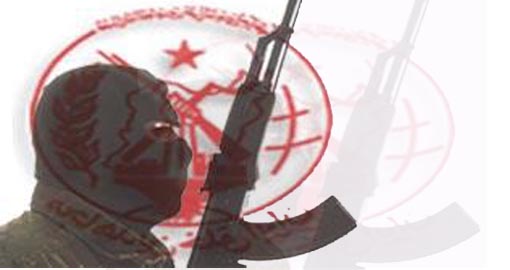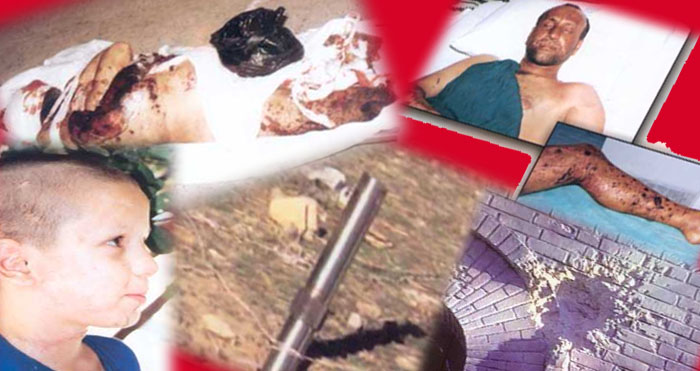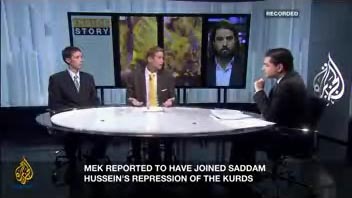On June 28, 1981, a huge explosion ripped through the headquarters of Iran’s ruling Islamic Republic Party, killing at least 74 government officials, including the country’s chief justice, Ayatollah Mohammed Beheshti and more than 20 parliament members, gathered that Sunday evening in southern Tehran.

Iran blamed the attack on the Mujahedeen-e-Khalq (MEK), a left-wing political group, which also killed Americans before the 1979 Islamic Revolution.
The suspect reportedly placed the bomb in a rubbish bin near where party leader Beheshti, 52, was addressing the group.
The incident, one of the deadliest political killings in Iran’s history, is still remembered as the Haft-e-Tir bombing, so named after the date when it took place on the Persian calendar.
A busy square and a subway station in central Tehran were similarly named in honour of the victims.
Two months later, President Mohammad Ali Rajaei, Prime Minister Mohammad Javad Bahonar, and three other people were also killed when an explosive hidden in a briefcase detonated inside the prime minister’s office.
The new president had barely escaped the June bombing.
The effect of the explosion reverberated through the parliament building nearby, and it took more than two hours to put out the fire that followed the blast, according to witness accounts.
A Harvard International Review article described the device as”very sophisticated”.
Bahonar’s secretary turned out to be an undercover MEK operative, and was identified by investigators as the person who planted the bomb. He and the Haft-e-Tir bombing suspect were never arrested.
‘No love lost for MEK’
The MEK’s history of violence has resurfaced in recent days, after US President Donald Trump appointed John Bolton as his national security adviser. The former US ambassador to the UN is a lobbyist for the group and its”government-in-exile”, the Iran National Council of Resistance.
Bolton and the MEK support Trump’s threat to undo the Iran nuclear deal and advocate for”regime change”in Iran. But critics warned the group’s proximity to the levers of American power and the policy they espouse could be a recipe for more bloodshed in the Middle East.
The MEK said it has long renounced violence to advance its goals in Iran. It said it supports”a democratic Iran based on the popular vote”, and the separation of church and state. In September 2012, it was removed from the US”terror list”.
But when Bolton spoke before the group in July 2017 in Paris, members cheered loudly as he said it should be a US policy goal that the Iranian regime”will not last until its 40th birthday”on April 1, 2019.
MEK in Iraq
“I have said for over 10 years since coming to these events, that the declared policy of the United States of America should be the overthrow of the mullah’s regime in Tehran.”
A year before that, Prince Turki bin Faisal Al Saud, a former intelligence chief of Saudi Arabia, also spoke before the group, denouncing the”Khomeini cancer”, in reference to the Islamic Republic’s founder and first Supreme Leader, Ayatollah Ruhollah Khomeini.
Declarations such as those, however, only make the MEK more unpopular in Tehran, diminishing the likelihood that it could play a role in the country’s political future, observers said.
“There is no sympathy towards the group in Iran,”said Marzieh Javadi, a Tehran-based foreign policy expert who closely follows Iran and US relations.
Among the Iranian public, there is a negative view towards the MEK not only because of its policy of regime change, but more so because of its role in the post-revolution political assassinations and the Iran-Iraq war in the 1980s, she said.
At the height of the war between Iran and Iraq, the MEK sided with Baghdad, sending as many as 7,000 of its members to Iraq’s Camp Ashraf near the border with Iran.
According to the RAND Corporation think-tank, the MEK launched numerous raids across the border into Iran.
In exchange for its support of Saddam Hussein, MEK received”protection, funding, weapons, ammunition, vehicles, tanks, military training, and the use of land”.
That decision by the MEK to collaborate with Saddam only magnified Iranian public opinion against the group, Javadi said.
“That was a very dark point in the history of Iran, and that is why there is hostility towards these people,”Javadi said.
‘Socialist ideology’
Saeed Jalili, a Tehran-based journalist and expert on the Iranian economy, said with the group’s chequered past, it is doubtful the MEK has any significant following inside Iran now.
“I have not heard anyone asking them [MEK] to make a comeback [in Iran] or anything like that,”he said.
Majority of Iranians”can’t stand the idea of having a socialist regime”, Jalili said referring to”cruel”single-party ruling system in communist countries.
“The fact that they are believed to be promoting a strict communist ideology makes them less likable here,”he told Al Jazeera.
“Iranians believe it’s no different than the one we already have.”
Al Jazeera contacted former US senator Robert Torricelli, a lawyer of MEK, for comment. He did not reply as of the publishing of this story.
But in an article published in Politico in 2016, Torricelli said he has seen”no evidence”that the MEK”took part in terrorist activities against Iranians or Americans”.
Torricelli said the group saved American lives following the 2003 US invasion of Iraq, by identifying locations of improvised explosive devices.
Founded in 1965 by a group of students from Tehran University, the MEK embraced a combination of Marxist philosophy and Islamic values, and supported an armed revolt against Shah Mohammad Reza Pahlavi, the last royal ruler of the country.
Before the revolution, the MEK carried out attacks on the Shah’s government and his American allies, including the killing of the Tehran police chief in 1972, and two US air force officers in 1975.
Right after the establishment of the Islamic Republic in 1979, MEK members were also believed to have participated in the hostage-taking at the US embassy in Tehran, which lasted for 444 days, according to the United States Institute of Peace and The National Interest foreign policy magazine.
But they later split with the dominant sectarian ruling party, and began targeting Muslim leaders and government officials. In retaliation, the government executed socialist figures and MEK members.
MEK’s rift with Iran worsened when its leader, Masoud Rajavi, aligned with Saddam in the eight-year Iran-Iraq War.
‘Cult-like’
The organisation is now based in Paris and is led by Rajavi’s wife, Maryam Rajavi, an engineer and native of Tehran. It is unknown whether Masoud is still alive.
In her speeches as head of the MEK, Maryman has repeatedly highlighted her policy on gender equality, saying the rights of women are”linked to the struggle against … fundamentalism”.
Her organisation has also vowed to abolish the death penalty and promote freedom of assembly in a”free Iran”.
Torricelli praised MEK as”the most organised and disciplined of the Iranian opposition groups”.
Al Jazeera also requested comment, but received no response, from the office of former New York City mayor Rudy Giuliani, who spoke at the Persian New Year event of MEK in Albania on March 20.
At the celebration, Giuliani told thousands of cheering MEK members that the appointment of Bolton as President Trump’s national security adviser is”very exciting”, while reminding them of Bolton’s 2017 promise of regime change in Iran by 2019.
“You remember John Bolton? You think he changed his mind? No. In fact, if anything, John Bolton has become more determined that there needs to be regime change in Iran, that the nuclear agreement needs to be burned, and that you need to be in charge of that country.”
Iranians, however,”fundamentally don’t trust MEK’s narrative of history and their actions”, said Amir Havasi, an independent journalist in Iran.
Not counting its history of violence, the MEK’s link to the Trump administration”makes them a total pariah in Iran”now, Havasi said, adding the organisation is even more unpopular than the monarchists – those who supported Iran’s overthrown royal ruler.
How the Rajavis run the MEK is also a mystery, according to Kayvan Hosseini, editor of Radio Farda, the Persian-language service of Radio Free Europe/Radio Liberty.
He said former members accused the MEK of acting”like a cult”, and no one is allowed to criticise the Rajavis. There have also been reports of”forced divorces”and”group confessions”of members.
Hosseini said Maryam Rajavi has refused to speak to journalists and answer questions about her organisation.
“As long as they keep their door closed to independent journalists and their leaders refuse to answer to the media, it is not possible to know the truth about MEK.”
Meanwhile, Hosseini said it is not only the MEK but also other opposition groups who”actively seek”regime change in Iran.
But he said it is not up to any particular individual or organisation to decide who should be the”alternative”to the current government in Iran.
“That is a question for the Iranian nation. They should decide whether to keep their current government, or change it to any other form of government they desire.”



